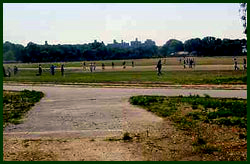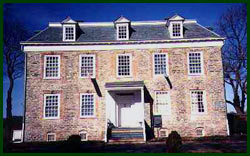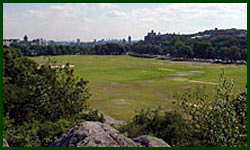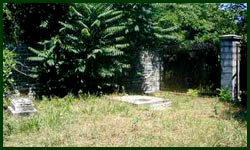


Welcome to Parks & Recreation
 Van Cortlandt Park -- 1,146 acres atop the ridges and valleys of the northwest Bronx -- is New York City's third largest park. Playing fields and playgrounds are scattered about the park's edges, surrounding a richly forested heartland fed by Tibbets Brook. Van Cortlandt is home to the country's first public golf course, the oldest house in the Bronx, and the borough's largest freshwater lake.
Van Cortlandt Park -- 1,146 acres atop the ridges and valleys of the northwest Bronx -- is New York City's third largest park. Playing fields and playgrounds are scattered about the park's edges, surrounding a richly forested heartland fed by Tibbets Brook. Van Cortlandt is home to the country's first public golf course, the oldest house in the Bronx, and the borough's largest freshwater lake.
From the quiet green shade of its oak forests to the crisp white mantle of cricket players atop the Parade Ground, the park boasts a past rich in culture, well-versed in history, and blessed with the intrinsic beauty of nature.
 The Van Cortlandt House Museum, a city and national landmark built in 1748, is the Bronx's oldest building and a fine example of 18th-century Georgian architecture. The Van Cortlandts quickly established a working plantation here, farming in the fields surrounding their home and operating a grist mill on Van Cortlandt Lake.
The Van Cortlandt House Museum, a city and national landmark built in 1748, is the Bronx's oldest building and a fine example of 18th-century Georgian architecture. The Van Cortlandts quickly established a working plantation here, farming in the fields surrounding their home and operating a grist mill on Van Cortlandt Lake.
During the Revolutionary War, the 2 ½ story fieldstone house was behind British lines, but several military commanders on both sides used the home, including Rochambeau, Lafayette, and Washington. In 1783, George Washington stayed here the night before his triumphant return to New York City to reclaim the land from the departing British.
When the area became parkland in 1888, the home fell into disrepair. In 1897, the National Society of Colonial Dames took possession of the property and created the Museum, making it the fourth established house museum in the nation, the second in the state, and the first in the City.
 Vault Hill is where the Van Cortlandt family established their burial ground in 1748 upon Frederick Van Cortlandt's death. At the onset of the American Revolution, City Clerk Augustus Van Cortlandt (Frederick's son) feared the British would destroy the city records, so he hid them here. Although the family remains have been removed to Woodlawn Cemetery, the stone-walled structure still exists upon the hill. Rocky outcrops here rise 169 feet above sea level and offer an inspiring view of the Parade Ground and, on a clear day, the skyscrapers of Manhattan.
Vault Hill is where the Van Cortlandt family established their burial ground in 1748 upon Frederick Van Cortlandt's death. At the onset of the American Revolution, City Clerk Augustus Van Cortlandt (Frederick's son) feared the British would destroy the city records, so he hid them here. Although the family remains have been removed to Woodlawn Cemetery, the stone-walled structure still exists upon the hill. Rocky outcrops here rise 169 feet above sea level and offer an inspiring view of the Parade Ground and, on a clear day, the skyscrapers of Manhattan.
 The Vault is pre-dated by the Kingsbridge Burying Ground (1732). A remnant of the cemetery lies in a small fenced area just east of the Ecology Center. Several prominent families, including the Berrians, Tippets and Ackermans, are buried here.
The Vault is pre-dated by the Kingsbridge Burying Ground (1732). A remnant of the cemetery lies in a small fenced area just east of the Ecology Center. Several prominent families, including the Berrians, Tippets and Ackermans, are buried here.
